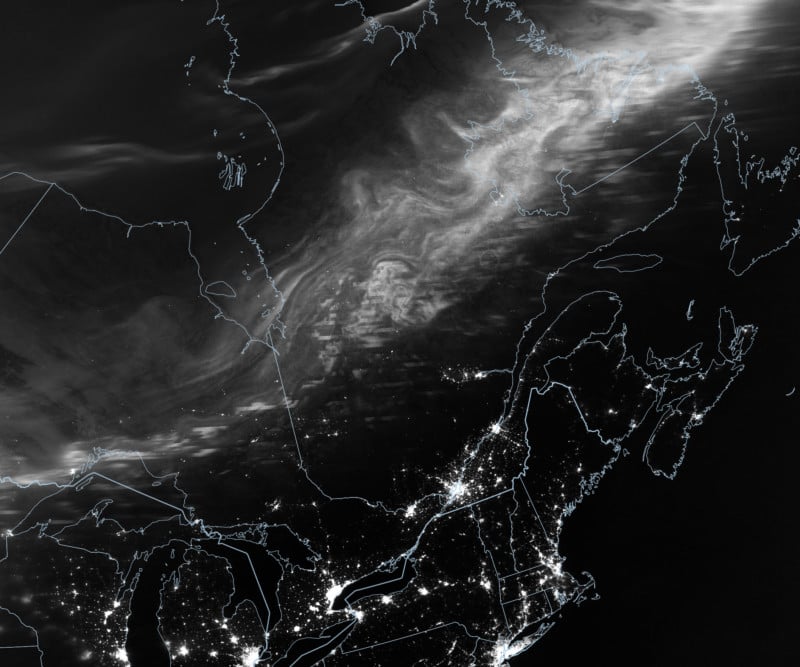‘Absolutely Unreal’ Photo of Aurora From Space Shows How Huge it Was
![]()
Astronaut Josh Cassada captured this incredible photo of the aurora borealis this week from his perspective on the International Space Station (ISS), which gives some perspective of just how huge the phenomenon was.
The solar winds are particularly strong right now which is allowing the aurora borealis to be seen from much farther south than is typical. Not only is it showing up in the skies in southern England which is already unusual, but it’s also been photographed over Death Valley in Southern California.
An infrared image taken by the Visible Infrared Imaging Radiometer Suite (VIIRS) on the NOAA-NASA Suomi NPP satellite captured what NASA describes as a “ribbon of light” over Canada, which gives an idea of just how strong the aurora was in late February.

An aurora is caused when electrically charged particles from space enter Earth’s upper atmosphere at a very high speed. These particles originate from the Sun, and as the peak of solar cycle 25 gets closer, the intensity of the aurora can grow.
“A solar cycle is traditionally measured by the rise and fall in the number of sunspots, but it also coincides with increases in solar flares, coronal mass ejections (CMEs), radio emissions, and other forms of space weather,” NASA explains. “These bursts of magnetized plasma and energetic waves from the Sun’s atmosphere can energize the gases and particles in Earth’s magnetosphere.”
What is perhaps most interesting is that last year when it began, NASA said that solar cycle 25 was expected to be about as strong as the previous solar cycle — which was below average. But contrary to that, a hole in the sun’s corona spat out an unusually large plasma release in February and was followed by heavy solar winds, which have resulted in supercharged aurora effects in Earth’s night sky.
Cassada’s photo from his perspective on the ISS visualizes just how large this week’s supercharged aurora was as it appears to wrap around huge swaths of the Earth and extends into space.
Absolutely incredible. Really helps add context to the red aurora we’ve been seeing photos of when you realize how far into space it extends.
— Andrew McCarthy (@AJamesMcCarthy) March 1, 2023
Perhaps most exciting is that the peak of solar activity is still two years away: NASA expects that “solar maximum” will be reached sometime in mid-2025.
Image credits: NASA, Josh Cassada